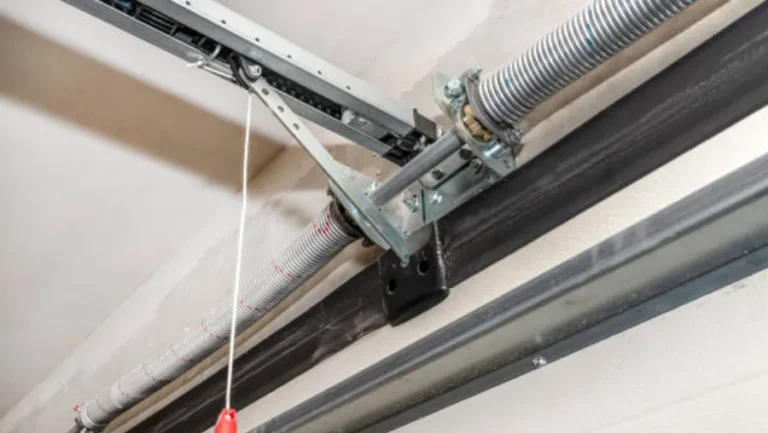A garage door is one of the most frequently used components of your home. Whether you’re heading out for work, returning home, or storing items, you rely on your garage door to open and close smoothly. However, just like any mechanical system, garage doors can fail—often when you least expect it.
Emergency garage door failures are more than just inconvenient; they can compromise your home’s security and even put your safety at risk. In this article, we’ll break down the most common emergency garage door issues and show you how to prevent them through routine maintenance and early detection.
Why Emergency Garage Door Issues Shouldn’t Be Ignored
When a garage door malfunctions, it can leave your home vulnerable to theft, expose your property to harsh weather, or even trap your vehicle inside. Many of these failures stem from worn-out components or neglected maintenance, and the longer they go unaddressed, the more expensive the repairs become. That’s why it’s critical to understand the warning signs and act fast.
Top Emergency Garage Door Failures
1. Broken Torsion or Extension Springs
Garage door springs are under immense tension and do the heavy lifting every time you open or close the door. When a spring breaks, the door may not move at all or slam shut without warning—a dangerous situation.
Symptoms:
- Loud banging noise from the garage
- Door doesn’t open or closes very quickly
- Gaps in the torsion spring
Prevention:
Have springs inspected annually by a technician. Most springs last about 10,000 cycles (roughly 7–10 years). Replacing them before they fail is safer and more affordable.
2. Frayed or Snapped Cables
Garage door cables work alongside the springs to lift and lower the door. Over time, they can wear down, fray, or snap, causing the door to hang unevenly or jam.
Symptoms:
- Door hangs at an angle
- Grinding noise during operation
- Visible fraying or loose cables
Prevention:
Schedule regular maintenance checks. Never attempt cable repair yourself, as the tension can cause serious injury if handled improperly.
3. Off-Track Garage Door
A garage door that has come off its tracks can’t operate safely. This issue can be caused by impact, worn-out rollers, or poor alignment.
Symptoms:
- Door appears crooked or stuck
- Unusual scraping or grinding sounds
- Door jams halfway through movement
Prevention:
Avoid bumping the door with your car and make sure rollers are clean and well-lubricated. Contact a professional immediately if the door slips off track.
4. Garage Door Opener Malfunction
The opener motor is the heart of your automatic garage door system. Electrical issues, faulty wiring, or a burned-out motor can cause it to fail unexpectedly.
Symptoms:
- Remote doesn’t work
- Motor runs but door doesn’t move
- Door opens or closes partially
Prevention:
Keep your opener clean and replace remote batteries regularly. If your opener is older than 10–15 years, consider upgrading to a newer, more reliable model.

5. Misaligned or Dirty Safety Sensors
Modern garage doors come equipped with photo-eye sensors that prevent the door from closing on people or objects. If these sensors are misaligned or dirty, your door might not close at all.
Symptoms:
- Door reverses when trying to close
- Flashing lights on the opener
- Obvious dirt or blockage on the sensors
Prevention:
Wipe sensors clean regularly and check alignment by ensuring both LEDs are solid (not blinking). Realign if needed, or have a technician assess if problems persist.
6. Door Won’t Respond at All
This can be due to a power outage, blown fuse, or a serious electrical failure within the opener system.
Symptoms:
- No response from wall switch or remote
- No motor sound
- Other electrical systems in the garage are down
Prevention:
Check for power supply issues first. If everything seems normal but the door still doesn’t respond, it’s time to call for emergency repair service.
How to Prevent Garage Door Emergencies
Schedule Annual Professional Inspections
Professional technicians can catch small issues early—before they lead to an emergency. A yearly inspection includes testing spring tension, checking cable condition, aligning tracks, and testing sensors and openers.
Keep Moving Parts Lubricated
Use a high-quality silicone or lithium-based lubricant on rollers, hinges, tracks, and springs every three to six months. This reduces friction, minimizes wear, and keeps the system running smoothly.
Don’t Delay Small Repairs
Strange noises, slow operation, or jerky movement are early warnings. The sooner you address these signs, the less likely you are to face a full-blown emergency later on.
Keep the Door Balanced
If your door is unbalanced, the opener and springs will wear out faster. You can test balance by disconnecting the opener and manually lifting the door halfway. If it doesn’t stay in place, the springs may need adjustment.
Conclusion
Emergency garage door failures can be a major inconvenience and a safety risk. The good news is that many of these issues are avoidable with regular upkeep, careful monitoring, and timely repairs. Whether it’s a broken spring, a jammed track, or a sensor issue, staying proactive with your garage door maintenance can save you time, money, and stress.
If you’re currently experiencing a garage door emergency, don’t attempt to fix it yourself. Contact a licensed garage door technician for prompt, professional service.





